How to Design a Garden Seating Area
Good garden seating is key to enjoying your outdoor space – and even petite plots will benefit from these expert tips
Kate Burt
14 March 2023
Houzz UK. I'm a journalist and editor, previously for the Independent, Guardian and various magazines. I'm now excited to part of the editorial team at Houzz UK & Ireland, bringing the best of British and Irish design, interiors and architecture to Houzz.com.
Houzz UK. I'm a journalist and editor, previously for the Independent, Guardian and... More
What’s on your garden seating wish list? Are you thinking it would be nice to have a cosy corner where you can lounge after dark or get comfy with a book? What about a fabulous dining area, some spots where you can perch for a think or somewhere for a relaxing morning coffee or sun-downer?
Even in the teeniest of gardens, a good designer will help you to carve out a place outdoors where you can sit, sprawl, chat or eat. Read on to get the experts’ advice on where to start when planning your garden seating.
Professional advice from: Simon Orchard of Simon Orchard Garden Design; Claudia de Yong of Claudia de Yong Garden Design; Julia Shipton of BALMA Building Services
Beginning your garden project? Read How to Start a Garden Redesign
Even in the teeniest of gardens, a good designer will help you to carve out a place outdoors where you can sit, sprawl, chat or eat. Read on to get the experts’ advice on where to start when planning your garden seating.
Professional advice from: Simon Orchard of Simon Orchard Garden Design; Claudia de Yong of Claudia de Yong Garden Design; Julia Shipton of BALMA Building Services
Beginning your garden project? Read How to Start a Garden Redesign
What are the different types of garden seating area?
If you have the room, it’s good to include more than one place to sit, Claudia de Yong suggests. “Think about how you [might] use different spaces, from dining areas to relaxation [spots] to seats to enjoy different aspects and views,” she says. “It’s lovely to have multiple [options].”
Of course, the size and shape of your garden will determine how much seating you can include, but good design advice will open up opportunities you may not have considered. “Larger gardens can support permanent seating areas, [but] all types of seating help to extend hours spent outdoors,” Claudia says. “Seating outdoors is much like your indoor furniture and allows you to have functional pieces that can be both stylish and comfortable.”
The two key seating areas, suggests Julia Shipton, are a dining space, with as large a table as your garden will allow, and a living room-style area, where you could, for example, sit to watch films or media or simply socialise.
If you have the room, it’s good to include more than one place to sit, Claudia de Yong suggests. “Think about how you [might] use different spaces, from dining areas to relaxation [spots] to seats to enjoy different aspects and views,” she says. “It’s lovely to have multiple [options].”
Of course, the size and shape of your garden will determine how much seating you can include, but good design advice will open up opportunities you may not have considered. “Larger gardens can support permanent seating areas, [but] all types of seating help to extend hours spent outdoors,” Claudia says. “Seating outdoors is much like your indoor furniture and allows you to have functional pieces that can be both stylish and comfortable.”
The two key seating areas, suggests Julia Shipton, are a dining space, with as large a table as your garden will allow, and a living room-style area, where you could, for example, sit to watch films or media or simply socialise.
What about the seating itself?
Of course, you can buy a couple of deckchairs or loungers, a garden dining set or an outdoor sofa, but there are also lots of other ways to create seating, depending on what your garden offers.
Claudia shares some favourite ideas. “A tree seat that wraps around the trunk is a lovely idea and means you can enjoy the garden from all the way around, as well as creating a focal point,” she says. “It could be made from wood, metal or even willow or hazel with a grass seat.
“You could make use of a retaining wall to integrate built-in seating,” she continues, “cultivate a canopy using an arbour or arches to sit under and enjoy scented plants and climbers, or create a sunken area with in-built or moveable seating in the form of swing seats and loungers. Large logs make great, natural seating when used in wildlife-style gardens.”
Need help designing seating into your outside space? Contact garden designers in your area through Houzz.
Of course, you can buy a couple of deckchairs or loungers, a garden dining set or an outdoor sofa, but there are also lots of other ways to create seating, depending on what your garden offers.
Claudia shares some favourite ideas. “A tree seat that wraps around the trunk is a lovely idea and means you can enjoy the garden from all the way around, as well as creating a focal point,” she says. “It could be made from wood, metal or even willow or hazel with a grass seat.
“You could make use of a retaining wall to integrate built-in seating,” she continues, “cultivate a canopy using an arbour or arches to sit under and enjoy scented plants and climbers, or create a sunken area with in-built or moveable seating in the form of swing seats and loungers. Large logs make great, natural seating when used in wildlife-style gardens.”
Need help designing seating into your outside space? Contact garden designers in your area through Houzz.
Simon Orchard suggests doubling up when creating new garden features, so they can incorporate additional seating. “If you’re creating a raised pond, why not make the top about 40cm to 45cm off the ground, so the edge can double up as a seat?” he says. “Add a coping stone about 30cm wide to make it comfortable.
“Similarly, if installing a hot tub, semi-sink it into the ground to create an edge at seating height that you can just swing your legs over to get into the tub,” he says.
The same thinking can also be applied to raised beds, as seen in this hardwood floating bench, one of Simon’s projects. “It has simple lines, and the warm tones of the wood contrast nicely with the dark grey of the rendered walls,” he says. “Also, because it’s floating, there’s the opportunity to create a planting bed underneath it with shade-tolerant plants.”
“Similarly, if installing a hot tub, semi-sink it into the ground to create an edge at seating height that you can just swing your legs over to get into the tub,” he says.
The same thinking can also be applied to raised beds, as seen in this hardwood floating bench, one of Simon’s projects. “It has simple lines, and the warm tones of the wood contrast nicely with the dark grey of the rendered walls,” he says. “Also, because it’s floating, there’s the opportunity to create a planting bed underneath it with shade-tolerant plants.”
How do you pick a good position for outdoor seating?
Take note of where the light falls. “To enjoy the best of the sun, choose an east-facing spot for your morning coffee and, for sun-downers, a west-facing spot with no large trees or buildings in the way, as these will block the sun as it gets lower in the sky,” Simon says.
“When looking to position a table and chairs for eating outside, ensure the area is easy to walk on and level for table and chair legs,” Claudia says. “Hard paving is best rather than gravel – and it’s always nice to be able to move a table and chairs onto a grassed area during the summer months.”
Simon and Claudia both add that it’s helpful to keep any dining seating close to the house where possible to save time going backwards and forwards with everything you need for dinner – and then everything you’ve forgotten.
More: How to Lay Out a Garden
Take note of where the light falls. “To enjoy the best of the sun, choose an east-facing spot for your morning coffee and, for sun-downers, a west-facing spot with no large trees or buildings in the way, as these will block the sun as it gets lower in the sky,” Simon says.
“When looking to position a table and chairs for eating outside, ensure the area is easy to walk on and level for table and chair legs,” Claudia says. “Hard paving is best rather than gravel – and it’s always nice to be able to move a table and chairs onto a grassed area during the summer months.”
Simon and Claudia both add that it’s helpful to keep any dining seating close to the house where possible to save time going backwards and forwards with everything you need for dinner – and then everything you’ve forgotten.
More: How to Lay Out a Garden
What are some good options for small gardens?
In a petite plot, you can still create a surprisingly good array of seating options – but every inch of space needs to be well thought-out. Doubling up and creating flexible options are key here.
“Capitalise on a corner if space is limited; the garden will also feel less cluttered,” Claudia says. “Either use a corner-style sofa or build a banquette, which can be made from bricks or even pallets.
“You can also use moveable or foldable furniture, which helps maximise limited space,” she continues. “Bistro sets, for instance, can be great for smaller gardens, terraces or courtyards, as they’re generally smaller and lighter in construction.”
“Consider seating that serves a secondary purpose,” Simon adds. “For example, simple log seats which, when when not in use, you could use to arrange container plants in front and on top of for a tiered planting display.”
In a petite plot, you can still create a surprisingly good array of seating options – but every inch of space needs to be well thought-out. Doubling up and creating flexible options are key here.
“Capitalise on a corner if space is limited; the garden will also feel less cluttered,” Claudia says. “Either use a corner-style sofa or build a banquette, which can be made from bricks or even pallets.
“You can also use moveable or foldable furniture, which helps maximise limited space,” she continues. “Bistro sets, for instance, can be great for smaller gardens, terraces or courtyards, as they’re generally smaller and lighter in construction.”
“Consider seating that serves a secondary purpose,” Simon adds. “For example, simple log seats which, when when not in use, you could use to arrange container plants in front and on top of for a tiered planting display.”
What are some common garden seating mistakes?
“A good outdoor space requires an appropriate ‘furniture to greenery ratio’,” Julia advises. In other words, beware of filling a small plot with too much furniture or with pieces that are too large for the scale of your garden.
Claudia also underlines the importance of dimensions, saying that people often don’t allow for the correct height from the ground or the depth for seating. “Don’t forget to measure garden furniture, especially if space is limited,” she cautions.
“Built-in seats can look great,” Simon adds, “but if you want to lounge, they may not be that comfortable unless you have cushions custom-made.
“Also, if the bench has a raised backrest – ie, a retaining wall – it’s very likely that the wall will have vertical sides” he says. “Again, this can be uncomfortable to sit against without cushions. Think about building an angled backrest – about 10 or 15 degrees off vertical will be enough to make it a more comfortable experience.”
“A good outdoor space requires an appropriate ‘furniture to greenery ratio’,” Julia advises. In other words, beware of filling a small plot with too much furniture or with pieces that are too large for the scale of your garden.
Claudia also underlines the importance of dimensions, saying that people often don’t allow for the correct height from the ground or the depth for seating. “Don’t forget to measure garden furniture, especially if space is limited,” she cautions.
“Built-in seats can look great,” Simon adds, “but if you want to lounge, they may not be that comfortable unless you have cushions custom-made.
“Also, if the bench has a raised backrest – ie, a retaining wall – it’s very likely that the wall will have vertical sides” he says. “Again, this can be uncomfortable to sit against without cushions. Think about building an angled backrest – about 10 or 15 degrees off vertical will be enough to make it a more comfortable experience.”
What about shade?
A sunny spot sounds nice, but think about that summer heat. “If you want to be able to sit outside in summer without getting burnt to a crisp, then being able to place your seating in a shady spot is paramount,” Simon says.
“Tall hedges, shrubs and trees might provide all the shade you need,” he says. “If the foliage of a shrub or tree is quite low to the ground, consider raising the ‘crown’ by cutting off lower branches, giving you enough head space for sitting underneath. But beware of big trees that are frequented by pigeons and crows – before you know it, your nice new sofa might be covered in bird droppings.”
Pictured here are “umbrella-shaped” trees over a dining area in one of Claudia’s projects. “It works so well, allowing the right amount of shade during the summer while also creating height with the trees and added interest all year round,” she says.
In terms of man-made shade, there are a few options to consider, including sail shades, large parasols and pergolas. “Sail shades can be removed and stored when not in use and parasols can be folded down and moved (although their bases can be extremely heavy),” Simon says.
“Pergolas are going to be a permanent fixture, but can be an invaluable addition to a garden and there are lots of options to choose from depending on budget,” he continues. “Some of the aluminium pergolas have tilting and retracting roofs, as well as pull-down side panels, so you can sit outside in all weathers.”
A sunny spot sounds nice, but think about that summer heat. “If you want to be able to sit outside in summer without getting burnt to a crisp, then being able to place your seating in a shady spot is paramount,” Simon says.
“Tall hedges, shrubs and trees might provide all the shade you need,” he says. “If the foliage of a shrub or tree is quite low to the ground, consider raising the ‘crown’ by cutting off lower branches, giving you enough head space for sitting underneath. But beware of big trees that are frequented by pigeons and crows – before you know it, your nice new sofa might be covered in bird droppings.”
Pictured here are “umbrella-shaped” trees over a dining area in one of Claudia’s projects. “It works so well, allowing the right amount of shade during the summer while also creating height with the trees and added interest all year round,” she says.
In terms of man-made shade, there are a few options to consider, including sail shades, large parasols and pergolas. “Sail shades can be removed and stored when not in use and parasols can be folded down and moved (although their bases can be extremely heavy),” Simon says.
“Pergolas are going to be a permanent fixture, but can be an invaluable addition to a garden and there are lots of options to choose from depending on budget,” he continues. “Some of the aluminium pergolas have tilting and retracting roofs, as well as pull-down side panels, so you can sit outside in all weathers.”
What’s the best solution for cushion storage?
Cushion storage is one of those things that’s easily overlooked, but without a solution, your new comfy seating may quickly be ruined by the elements.
“The bigger your sofa, the more storage space you’re going to need, which can be a problem, especially in smaller gardens where space is at a premium,” Simon says. “Sheds and summerhouses can be used to store cushions, or consider siting a cushion storage box down the side of the house or in an unused area of the garden.
Julia suggests outdoor ottomans, which come in various sizes and can be covered in waterproof fabric. Claudia likes a lift-up bench seat with storage inside.
To help this practical item look at home in your outdoor space, Simon advises tying the materials and colours into the existing scheme. “You may have horizontal slatted cedar fences or anthracite grey door and window frames – you could echo that in the cushion storage box,” he says.
Cushion storage is one of those things that’s easily overlooked, but without a solution, your new comfy seating may quickly be ruined by the elements.
“The bigger your sofa, the more storage space you’re going to need, which can be a problem, especially in smaller gardens where space is at a premium,” Simon says. “Sheds and summerhouses can be used to store cushions, or consider siting a cushion storage box down the side of the house or in an unused area of the garden.
Julia suggests outdoor ottomans, which come in various sizes and can be covered in waterproof fabric. Claudia likes a lift-up bench seat with storage inside.
To help this practical item look at home in your outdoor space, Simon advises tying the materials and colours into the existing scheme. “You may have horizontal slatted cedar fences or anthracite grey door and window frames – you could echo that in the cushion storage box,” he says.
What are your favourite options for lighting different seating areas?
Claudia is a fan of keeping outdoor lighting simple. “Outdoor candles for atmosphere are a favourite,” she says. “Also, waterproof, rechargeable, portable LED lights are perfect for alfresco meals and have no messy cables to hide.” These also ensure all lights are extinguished or turned off at bedtime, so wildlife can enjoy the darkness.
If you’re wiring-in lights, consider where the beams are likely to fall. “Make sure lights aren’t pointing directly at the seating, which would cause glare and wouldn’t make for a relaxing situation,” Simon says. “For a contemporary look, consider installing LED strip lighting on the underside of a bench to cast a warm, downward light and highlight any underplanting you may have.”
More: How to Design Garden Lighting That’s Good for You and Wildlife
Tell us…
What kind of garden seating do you have – and which of these tips has most inspired you? Let us know in the Comments.
Claudia is a fan of keeping outdoor lighting simple. “Outdoor candles for atmosphere are a favourite,” she says. “Also, waterproof, rechargeable, portable LED lights are perfect for alfresco meals and have no messy cables to hide.” These also ensure all lights are extinguished or turned off at bedtime, so wildlife can enjoy the darkness.
If you’re wiring-in lights, consider where the beams are likely to fall. “Make sure lights aren’t pointing directly at the seating, which would cause glare and wouldn’t make for a relaxing situation,” Simon says. “For a contemporary look, consider installing LED strip lighting on the underside of a bench to cast a warm, downward light and highlight any underplanting you may have.”
More: How to Design Garden Lighting That’s Good for You and Wildlife
Tell us…
What kind of garden seating do you have – and which of these tips has most inspired you? Let us know in the Comments.
Related Stories
Garden Inspiration
Are You Doing These 6 Things to Make Your Garden Feel Smaller?
By Kate Burt
With good intentions, we can sometimes unwittingly shrink our gardens, so make sure you swerve these common mistakes
Full Story
Gardening
How Do I Create a Drought-tolerant Garden?
By Kate Burt
As summers heat up, plants that need less water are increasingly desirable. Luckily, there are lots of beautiful options
Full Story
Garden Inspiration
5 Inspiring Before and After Garden Transformations
Check out what a difference designers have made to these once dull plots, visually expanding spaces and creating privacy
Full Story
Garden Inspiration
How to Disguise Rubbish and Recycling Bins Outside Your Home
Need to hide unsightly bins in your garden or driveway? Take a look at these clever ideas for inspiration
Full Story
Garden Tours
Garden Tour: A Bare Roof Terrace Becomes a Pretty, Sociable Space
By Kate Burt
A retired couple got help transforming their large rooftop into a gorgeous, welcoming, multi-functional retreat
Full Story
Garden Planning
Can I Have a Lawn-free Garden That’s Kind to the Environment?
Try these tips to help you plan a garden without grass that’s still leafy and eco-friendly
Full Story
Garden Inspiration
7 Things People Don’t Tell You About Designing a Garden
Uncover some of the more surprising elements of planning a garden redesign
Full Story
Garden Inspiration
9 Ways to Create a More Sustainable Garden
Simple, effective ideas for reducing your environmental footprint and creating a beautiful garden
Full Story
Garden Inspiration
18 Soul-soothing Green Roofs
By Kate Burt
Whether you choose sedum, wildflowers, or a mix, a living roof can be a beautiful and biodiverse addition to your home
Full Story
Garden Inspiration
9 Ways to Enjoy Colour in Your Garden All Year Round
By Kate Burt
However your garden grows, you can add colour with hardscaping, furniture and accessories
Full Story

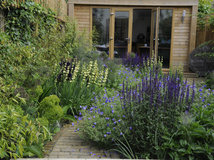

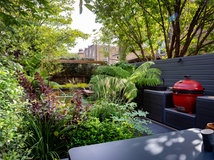
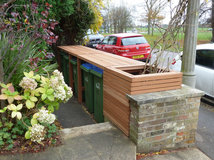
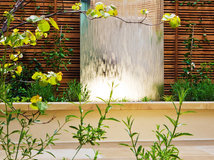
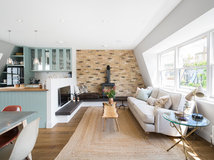
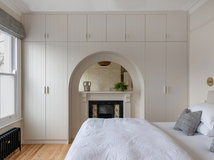
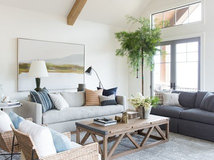
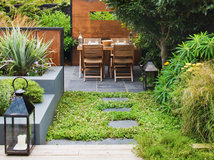
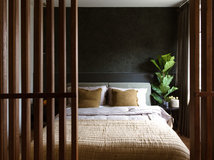


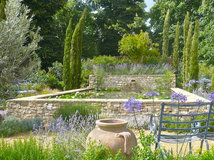
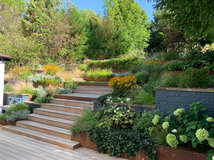

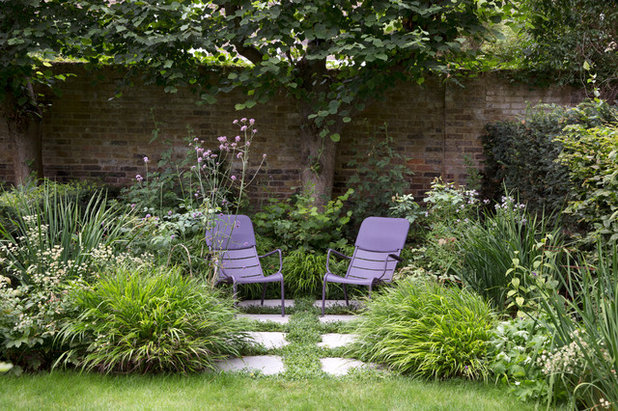
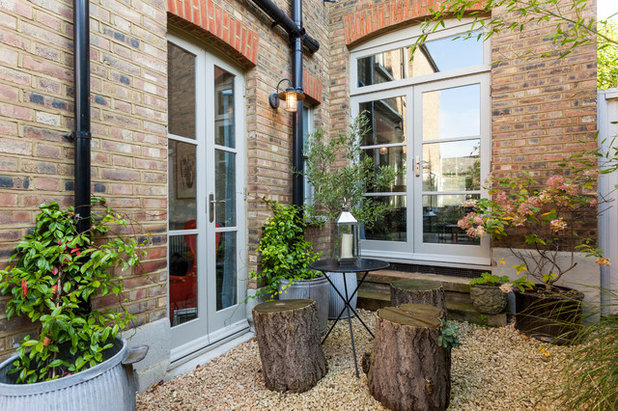
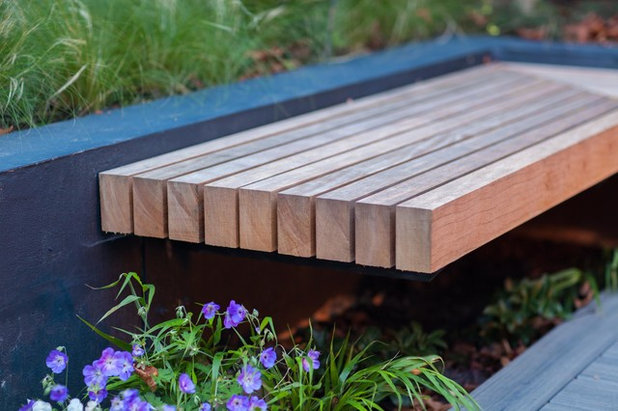
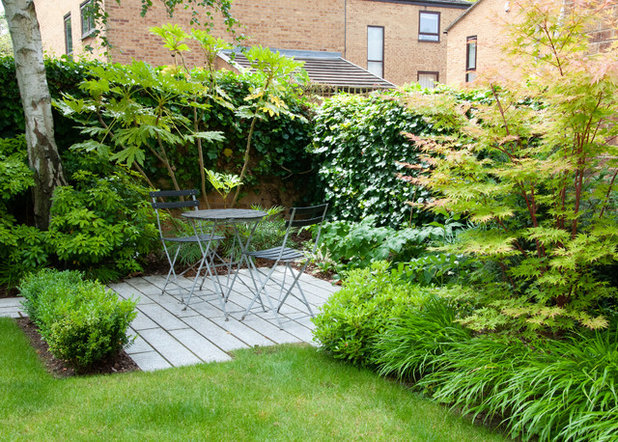
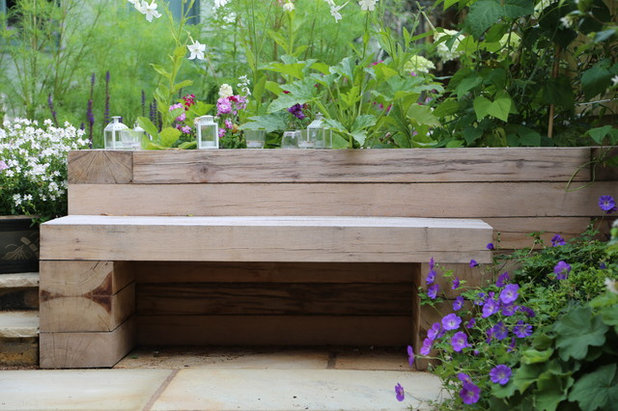
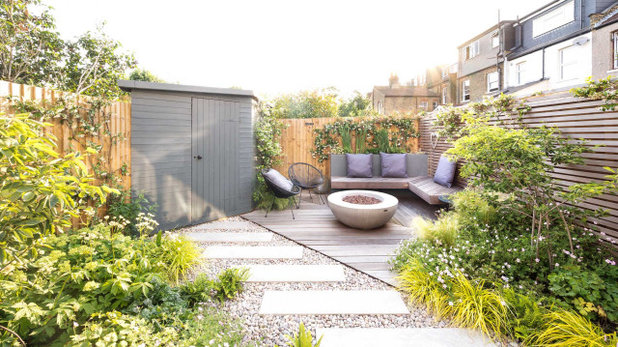
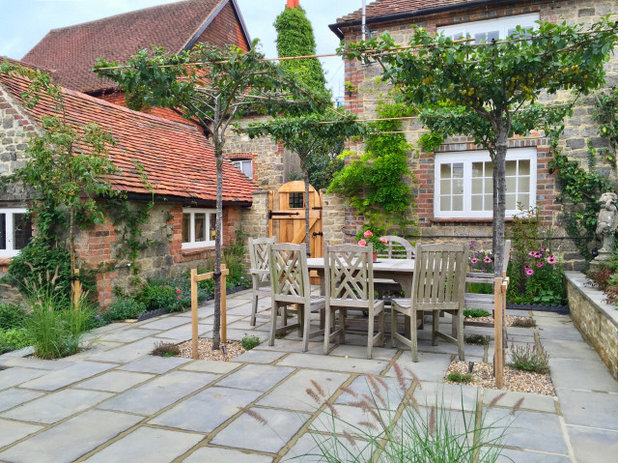
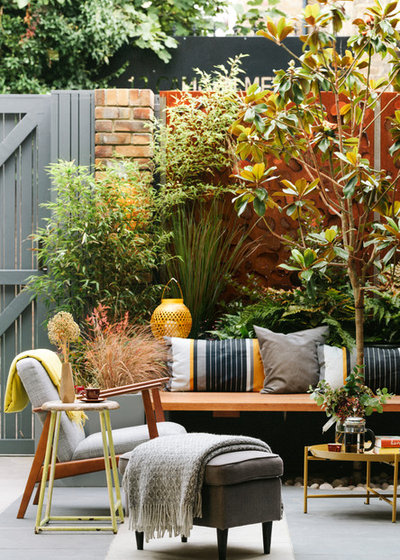
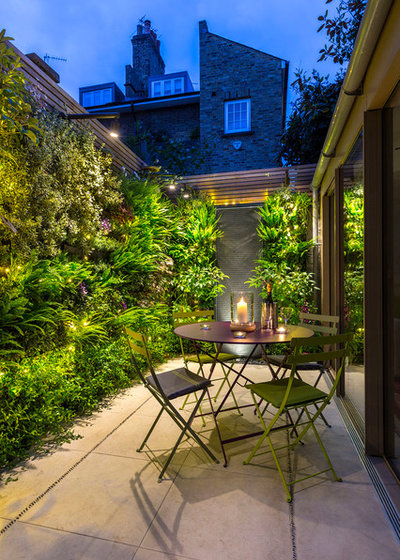

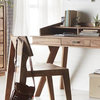
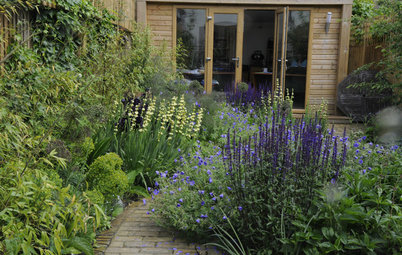
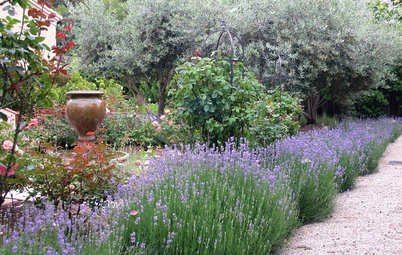
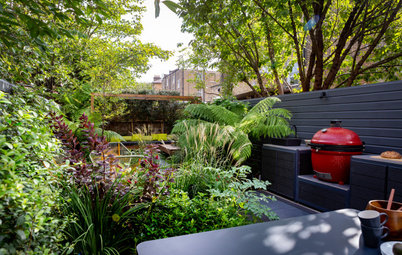

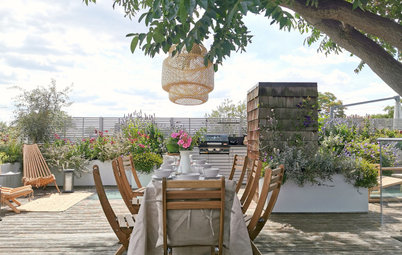
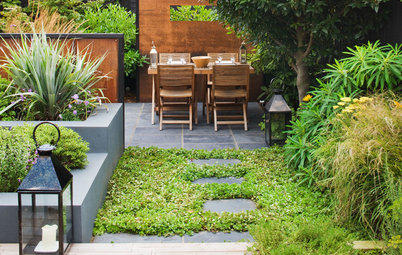
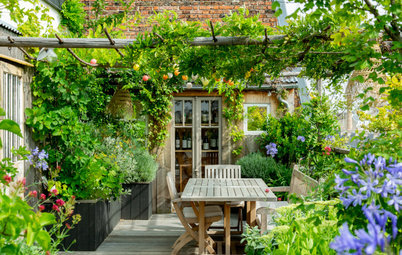
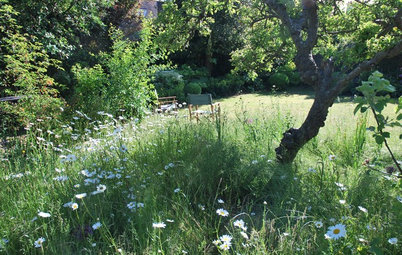
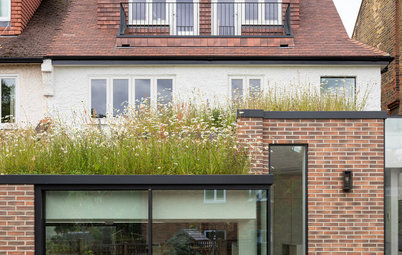
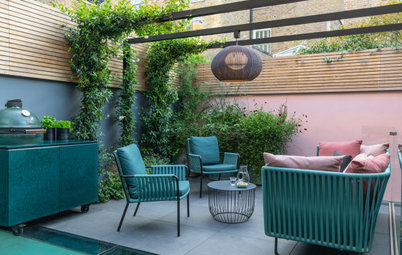
Sonia-Love the mirror you have on your fence. What a great design idea!
Love the chairs… anyone know the manufacturer?
Sorry…. To clarify… who manufacturers the purple, high back metal chairs…thanks